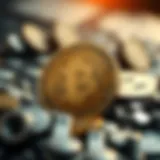Grimes and the Evolution of NFT Art


Intro
In recent years, the intersection of technology and art has taken on an entirely new dimension, thanks in large part to non-fungible tokens (NFTs). One figure who has made considerable waves in this burgeoning field is singer and artist Grimes. She isn't just dabbling in this new form of digital ownership; she's driving the conversation about what art means in a digital-first world. As more and more creators explore the possibilities of NFTs, understanding Grimes' journey offers valuable insights into the complexities of digital ownership and artistic expression.
As we navigate through this article, we'll unpack Grimes' contributions to NFT art, delve into key concepts in cryptocurrency, and examine the latest trends and innovations that are reshaping the landscape of artistic creation. The goal is not only to appreciate the unique creativity Grimes brings to the table, but also to comprehend the broader implications it has for artists, collectors, and technologists alike.
This exploration into the world of NFT art will shed light on how Grimes and others like her are challenging traditional notions of ownership and creativity, carving out new avenues for expression in our increasingly digital landscape.
Foreword to Grimes and NFT Art
The intersection of art and technology has birthed a new frontier in contemporary artistry: NFT art. This phenomenon, which has caught the world’s attention, has been propelled into the limelight by a select few artists, with Grimes standing out prominently among them. Exploring Grimes' journey through the NFT landscape is not just an examination of her contributions; it is a deep dive into how digital ownership and artistic expression coexist and evolve in today's rapidly changing world.
Understanding NFT Art
NFTs, or Non-Fungible Tokens, serve as certifiable digital assets registered on a blockchain. Unlike traditional currencies or crypto tokens that are interchangeable, NFTs establish unique ownership for digital items like art, music, or even tweets. This uniqueness fosters a new realm of possibilities for artists. For Grimes, this technology presents an opportunity to reimagine how her work can be appreciated and valued.
The relevance of NFTs largely hinges on this uniqueness and the proof of ownership they provide. It shifts artists from merely displaying their work in galleries to reclaiming control over the digital distribution of their art. This evolution has not only generated vast financial opportunities but also challenged the norms of what art can be. The introduction of NFT art has therefore heightened dialogue around copyright, valuation, and audience engagement.
Grimes' Artistic Background and Influences
To understand Grimes’ foray into the world of NFTs, it is essential to look at her artistic trajectory. For many artists, influences are varied and stem from personal experiences, genres, and cultural shifts. Grimes, whose real name is Claire Boucher, is a multi-dimensional artist rooted in a diverse array of musical and visual influences.
Her unique sound, which blends elements of electronic, pop, and experimental music, reflects her inclination towards innovation and pushing boundaries. This eclecticism is mirrored in her visual artistry, characterized by vibrant colors and ethereal motifs. Grimes draws inspiration from various sources, including technology, mythology, and personal narratives.
With her pronounced interest in technology, it’s no surprise that she would gravitate towards NFTs. Exploring digital art aligns seamlessly with Grimes’ ethos—one that emphasizes both creativity and the transformative capabilities of technology.
In essence, this section introduces the interplay between Grimes and NFTs, laying the groundwork for a detailed examination of her contribution to this digital revolution. This exploration is vital for anyone looking to understand the evolving landscape of art and the emerging trends it harbors.
The Rise of NFTs in the Art World
The emergence of Non-Fungible Tokens, or NFTs, has fundamentally reshaped the landscape of the art world. These digital tokens, which establish ownership over unique digital assets, have opened new avenues for artists, collectors, and investors alike. With Grimes being a prominent figure in this revolution, her involvement highlights just how pertinent the rise of NFTs is within the contemporary art scene. This segment will delve into the historical context of digital art, followed by an exploration of the mechanics behind NFT technology, creating a framework for understanding their growing importance in the art world.
Historical Context of Digital Art
Digital art has roots that stretch back several decades. It often seems like yesterday when the first digital images were being created, yet this genre has been evolving continuously since the 1950s. Artists began exploring computer-generated visuals, hence paving the way for a new form of creativity. Fast forward to the 21st century, digital art enjoys unprecedented validation, but it has not always been smooth sailing.
Often, digital art has been perceived as lesser or not worthy of high regard compared to traditional forms like paintings or sculptures. However, some early adopters took the plunge, believing that the digital realm could offer something unique. Artists like Casey Reas, one of the creators of Processing, and Ryoji Ikeda with his audiovisual installations have challenged conventions, gradually gaining acclaim.
As smartphones and social media proliferated, digital art began to flourish like wildflowers in spring. Platforms like DeviantArt and Behance emerged, providing artists with a stage to showcase their works. Yet, the onset of NFTs proved to be a game changer, elevating not only the visibility of digital art but also its monetary value. This shift from mere pixels on a screen to genuine collectible assets altered how the art community and collectors engaged with the medium.
The Mechanics of NFT Technology
Understanding the mechanics of NFTs delves into the intersection of art and cutting-edge technology. Unlike cryptocurrencies such as Bitcoin, which are fungible and can be exchanged one-for-one, NFTs are unique. They exist on blockchain technology—a secure digital ledger—ensuring transparency and verifiable ownership. This ensures that an artist retains specific rights even after a sale.
The core technology behind NFTs uses the Ethereum blockchain, where each token is imbued with unique data that defines its ownership and history. This unique identifier can represent not just art, but music, videos, and any digital asset, making it clear who the rightful owner is—no more guessing games. The appeal of NFTs lies beyond just ownership; they grant artists control over their work’s sale, allowing them to receive royalties from future resales.
Understanding the role of smart contracts also adds another layer of appreciation to NFTs. These contracts execute transactions automatically when certain criteria are met, eliminating intermediaries and reducing costs.
By cutting out the middleman, artists can sell directly to collectors, thus earning a more significant chunk of the sale. This democratization of the art market speaks volumes about the relevance of NFTs today.
Grimes' First NFT Release
Grimes' entrance into the NFT art space was akin to a rocket shooting for the stars; it brought with it not just her signature artistic flair but also a unique perspective on digital ownership and engagement. The way she approached her first NFT release highlighted both her creative genius and the potential of NFTs to redefine how artists interact with their audience and monetize their work. This section dissects the intricate layers behind this significant moment.
Overview of the First Collection
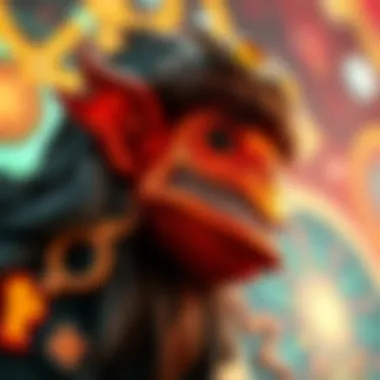
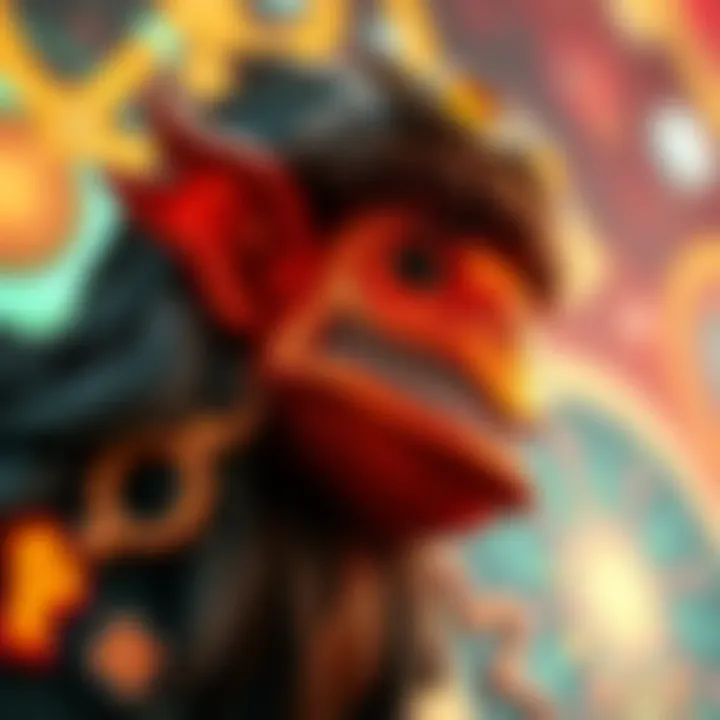
In March 2021, Grimes unveiled her inaugural NFT collection titled WarNymph. It was a visual feast, showcasing vibrant animations, ethereal sounds, and elements of her own artistry blended with techno-aesthetics. The collection consisted of ten unique pieces, including a standout work that fetched a staggering $5.8 million—a sum that sent ripples through the art and technology communities alike.
Grimes described the collection as encapsulating a "mythical and digital warrior universe," pulling influences from video games and pop culture. Each piece was designed not just for aesthetics, but as a narrative, a blend of her soundscapes and visual elements that immersive engaged viewers. The NFT auction, hosted on the platform Nifty Gateway, drew not only collectors and fans but also those curious about the intersection of art and technology.
Her work, marked by a distinctive style, cleverly leveraged the NFT format to transport viewers into alternate narratives and experiences. Grimes highlighted how these digital assets allowed her artistic expression to transcend the limitations of physical art forms, unlocking new avenues for creativity and connection with her audience.
Critical Reception and Impact
The reception of Grimes' first NFT collection was a juxtaposition of awe and skepticism. Critics and fans alike marveled at the aesthetic quality and originality embedded in the pieces. Some commentators on social media platforms celebrated her as a pioneer who managed to combine art and the spirit of the digital age seamlessly, further blazing a trail for other artists.
Despite the accolades, the collection was not without controversy. Conversations emerged around the sustainability of NFTs and environmental implications due to the high energy consumption associated with blockchain technology. Grimes addressed these concerns directly, acknowledging the criticisms while also emphasizing the positive potential of NFTs to empower artists and create new revenue streams.
For the broader art world, this marked a shift; artists began to consider NFTs not just as novelty, but as fundamental instruments of artistic expression. Grimes, thus, became a key figure in this change, sparking discussions about digital ownership and the future of art in a tech-driven world.
“The future of art is digital and immersive, and artists must evolve to thrive.”
The Artistic Process Behind Grimes' NFTs
When delving into the realm of NFT art, one finds that the artistic process is not merely an afterthought; it plays a crucial role in shaping perception and value. For Grimes, a multifaceted artist, this process weaves together visual storytelling, personal expression, and technological innovation. As we unpack her approach, it's evident that each creative decision reflects a broader commentary on the relationship between art, ownership, and the digital zeitgeist.
Creation and Conceptualization
Visual Elements
In the domain of visual elements, Grimes’ work stands out for its vibrant aesthetics and layered imagery. Her NFTs often feature a kaleidoscope of colors, intricate designs, and surreal landscapes that engage the viewer's eye. What makes these visual elements particularly compelling is the way they transcend traditional art forms. By utilizing digital media, Grimes infuses her pieces with the potential for interactivity and dynamism not seen in static artworks. This aspect of visual elements is beneficial, as it aligns with the ever-evolving landscape of digital art, allowing her audience to experience art in a manner that's immersive and reflective of contemporary digital culture.
One unique feature of these visual elements is how they blend fantasy with technology. For instance, a piece may depict ethereal beings against a backdrop of digital fractals, inviting interpretations about the intersection of reality and virtual existence. The advantage here lies in the ability to evoke emotions and narratives that resonate with a generation inundated with digital stimuli. However, some may criticize this approach, arguing that reliance on such starkly vibrant visuals can overshadow thematic depth. Yet, for Grimes, the vibrant palette is not merely eye candy; it's a gateway to deeper engagement.
Musical Integration
Musical integration in Grimes’ NFTs takes on a distinctive role, functioning as both a standalone experience and a complementary layer to the visual narrative. Each piece is often accompanied by original soundscapes, effectively creating a multisensory experience that enhances emotional engagement. This characteristic illustrates a popular choice among artists seeking to innovate within NFT space—blending music with visual arts. The melodious fusion allows audiences to interact on multiple levels, engaging not only visually but aurally.
A unique feature of this musical integration is its ability to propel the story and mood of the artwork. For instance, a serene visual might feature calming ambient sounds, leading the viewer into a meditative state, while a chaotic visual could blast energetic beats that provoke a sense of urgency or excitement. This duality provides distinct advantages, fostering an engaging atmosphere that encourages viewers to spend more time with the piece, thus increasing its perceived value. On the flip side, detractors might argue that too much emphasis on sound can distract from the visual message. Still, for Grimes, the synergy between her audio and visual elements marks her as not just an artist but a visionary of modern storytelling.
Utilizing Technology for Expression
Grimes showcases a distinctive approach when it comes to leveraging technology for artistic expression. Unlike traditional artists who may rely purely on canvas or physical materials, Grimes manipulates software and digital tools to create art that pushes boundaries. This approach allows her to experiment with various forms—whether through animations, interactive pieces, or the use of augmented reality. With tech constantly evolving, artists face the double-edged sword of keeping up with advancements while holding onto their creative identities. For Grimes, this marriage of technology and expression is a natural fit, as she embodies a blend of musician-artist-celebrity in an age where those lines blur.
Utilizing technology, she not only expands her audience reach but also challenges conventional notions of ownership. Each NFT she releases comes with its own narrative, remolding the idea of how we perceive and value art. Grimes’ process reflects a profound understanding of the digital age's complexities. By choosing to create in a medium that itself comments on the nature of art, she invites reflections on creativity, ownership, and the future of artistic expression.
"Art is the most beautiful of all lies; it must inform the viewer of relationships and ideas beyond the visible."
The artistic process behind Grimes’ NFTs is emblematic of her broader influence within the digital art ecosystem. By creatively interweaving visual and musical elements through innovative technology, she not only captivates her audience but also reshapes the narrative surrounding NFT art. Her work serves as a paradigm shift, an exploratory journey into understanding where art meets the digital frontier—an exploration that promises exciting possibilities for the future.
Market Dynamics of NFT Art
The market dynamics of NFT art present a fascinating landscape that combines artistry with emerging technology, transforming how value is perceived and exchanged. Understanding this market is crucial for anyone involved—whether they are artists like Grimes, collectors, investors, or tech professionals. This section unpacks the unique elements, benefits, and considerations that shape the dynamics of the NFT art realm.
Buyer Behavior and Trends
One cannot overlook the unique behavior exhibited by buyers in the NFT art market. These individuals often blend passion with investment acumen, seeking more than mere ownership; they are after a narrative, a piece of exclusivity, and often a social standing among peers. An early trend observed is the age demographic of buyers—centennials and millennials dominate the scene, diverse in interests but drawn together by a shared fascination with blockchain technology.
Notably, buying trends indicate that enthusiasts are willing to pay substantial sums for digital art that resonates with them. The motivations swing widely—some collectors are driven by love for a particular artist, while others see NFTs as digital assets expected to appreciate over time.
Another intriguing trend is the shift towards community-oriented purchases. Buyers often engage in groups, forming collectives or pools to acquire more expensive NFTs. This sense of community not only enhances the enjoyment of art but also levels the playing field, making high-value pieces accessible to a wider audience.


"The NFT market has reshaped the notion of class within art collecting, opening doorways that were once tightly shut."
Valuation and Pricing Mechanisms
Valuing NFT art presents challenges rooted in its digital nature, calling traditional art appraisal methods into question. The price of NFT art is influenced by various factors including rarity, demand, and the artist’s standing. In many cases, the principle of scarcity is manipulated—an artist might release a limited number of versions or unique pieces, effectively driving demand upward.
Marketplaces like OpenSea and Rarible showcase how pricing can fluctuate daily, influenced heavily by speculations and trends. These platforms provide transparency with sales history, allowing buyers to gauge market movements. In addition, auctions play a crucial role. Some pieces fetch astonishing prices during auctions, while others might remain stagnant, highlighting the unpredictability of buyer engagement.
Besides rarity and demand, the artist's narrative is of paramount importance. A solid backstory, innovative use of technology, or captivating presentation can elevate an NFT’s value significantly. Understanding this dynamic interplay of factors allows investors to navigate the market more astutely, identifying opportunities that align with emerging trends.
Grimes’ Influence on the NFT Ecosystem
Grimes stands as a pivotal figure in the NFT art realm. Her bold ventures into this groundbreaking space have not only showcased her unique artistic talent but also sparked a broader conversation about digital ownership and the multifaceted nature of art in the digital age. By engaging with NFTs, Grimes has influenced both emerging artists and established names, inviting them to explore this new frontier of artistic expression.
Shaping Public Perception of NFTs
Grimes’ foray into NFT art has significantly altered public perception. Initially viewed with skepticism, NFTs are now gaining traction among artists and collectors alike, largely due to figures like Grimes, who embody the potential of digital artworks. Through her platform, she has demystified the technology behind NFTs and made it accessible to a wider audience by translating complex concepts into relatable narratives.
Her first NFT drop was marked by bold visuals and sounds, alongside an evocative story. This compelling blend opened the door for discussions around the value of digital art and the authenticity linked to ownership. Grimes' transparency about her artistic process and the execution of these NFTs facilitated a pivotal shift. Public opinion, once clouded with doubt, started to appreciate the unique qualities of ownership and direct creator support inherent in NFTs. It’s no longer just about buying art; it’s about owning a piece of an artist’s vision.
Grimes tackled traditional notions of art possession, refreshing the dialogue around what it means to be a collector in a virtual world. As more fans and casual observers witness the integration of blockchain technology with art, there’s an increasing recognition: the way art is created and consumed is evolving.
Collaborations and Community Engagement
Grimes has actively sought collaborations within the NFT space, further demonstrating her commitment to building community engagement. By teaming up with other artists and technologists, she has showcased the collective potential of NFTs to create unique experiences. These collaborations have not only reinforced her brand but have also encouraged other artists to explore this unconventional medium.
For instance, her partnership with notable digital artists allowed for the fusion of different artistic styles and practices, enriching the overall NFT landscape. This approach fosters a spirit of innovation, challenging both artists and audiences to reimagine the boundaries of their creativity.
Moreover, Grimes has utilized social media platforms to engage directly with her audience, thereby humanizing the NFT experience. Her candid discussions on platforms like Twitter or Reddit have invited feedback, sparking lively discussions and providing insights into audience perceptions. As fans began to see her stake in this art form, they felt a sense of connection and involvement, blurring the lines between creator and consumer.
The collaborative nature of the NFT ecosystem is vital for its growth. Grimes' actions have encouraged a diverse group of creators to enter the field, creating a ripple effect. Whether through joint projects or mutual promotion, the influence of Grimes serves as an impetus for collective exploration in the digital arts.
"As the digital world expands, so too does the definition of art. Grimes embodies this shift, making the NFT space more tangible and approachable for newcomers."
Through Grimes' initiatives, the NFT ecosystem can evolve into a robust community. This environment nurtures creativity, inspires innovation, and compels audiences to engage with art in new and meaningful ways. As Grimes continues to navigate this terrain, she undeniably shapes the trajectory of NFT art, leaving an indelible mark on the future of digital expressions.
Controversies Surrounding NFT Art
As the world of Non-Fungible Tokens (NFTs) gains traction, controversies emerge, casting shadows over the gleaming prospects of this new medium. Grimes, with her foray into NFT art, invites scrutiny, revealing both the allure and the challenges that come with it. This analysis is vital not just for understanding her involvement, but also for grasping the larger implications of NFT technology on society and the art industry.
Environmental Concerns
One of the most pressing issues tied to the rise of NFTs is their impact on the environment. Much of the technology underpinning NFTs operates on blockchain platforms, which often necessitate significant energy consumption. The Ethereum network, for instance, traditionally utilizes a proof-of-work mechanism that requires vast amounts of electricity, leading to criticisms about its carbon footprint.
As we witness a cultural shift towards digital ownership, many artists, including Grimes, face questions about their responsibility toward environmental sustainability. Critics argue that creating environmentally harmful artwork, regardless of its innovative spirit, undermines the positive aspects associated with digital transformation. On the flip side, advocates suggest that NFT art could promote awareness about environmental issues by using unique narratives and symbolism in their creations.
"Art should provoke thought, but must the consequences of creating be more damaging than the message itself?"
This debate isn’t black and white—it’s a gray area filled with complexities. Some platforms, like Tezos, are stepping in to offer eco-friendlier alternatives, shifting the focus from purely financial gains to a more responsible practice. As artists like Grimes navigate these waters, their choices could influence which blockchain technologies gain traction long-term, potentially spurring a shift toward greener solutions.
Ownership and Copyright Issues
NFTs introduce an intricate framework of ownership and copyright that complicates traditional definitions of art ownership. When an artist sells an NFT, what rights are transferred? In many cases, buyers might own a unique token that represents the artwork, but they may not necessarily hold copyright or reproduction rights unless explicitly stated.
For Grimes, who operates in both music and visual arts, this ambiguity creates unique dilemmas. When individuals purchase Grimes' NFTs, can they sell derived works or reproduce the art? The answer often hinges on the contractual terms set by the artist. Without clear stipulations, the potential for misunderstandings looms large.
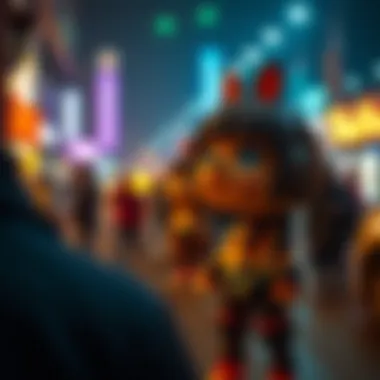
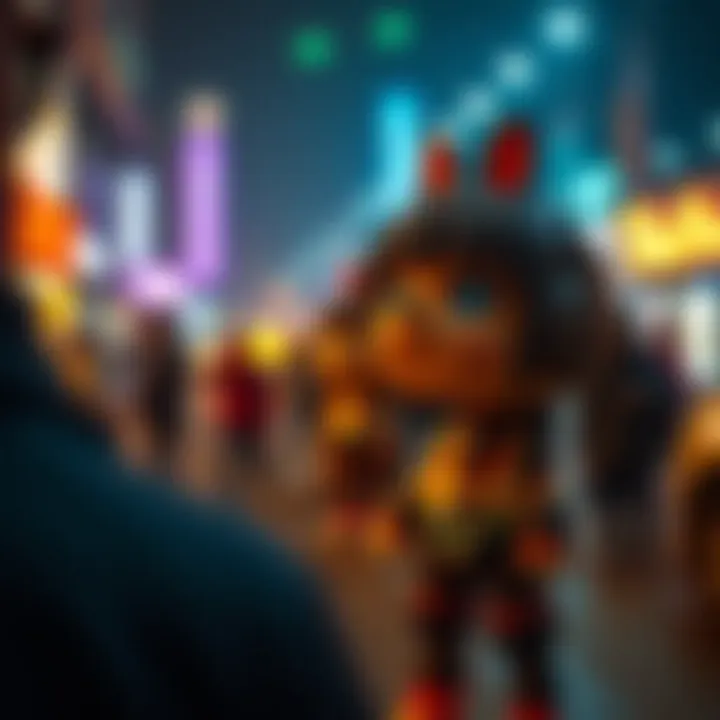
Additionally, with the vast digital landscape, the risk of copyright infringement escalates. If someone were to create an NFT using elements from Grimes’ original work without permission, it raises questions about authenticity and the safeguarding of intellectual property.
- Key Concerns in Ownership and Copyright:
- The distinction between ownership of a token and underlying copyright features
- The impact of smart contracts on traditional artist-patron relationships
- The ethical responsibility of platforms to enforce copyrights
As the NFT space matures, legal frameworks will likely evolve to address these challenges. Until then, artists like Grimes find themselves treading cautiously, reinforcing the need for clarity in contracts to protect their creative endeavors.
By addressing these controversies head-on, artists can engage in meaningful dialogues around the future of art in a digital age, ensuring that the innovations they bring into the realm of NFTs incorporate ethical considerations and sustainability. Ultimately, it’s a balancing act between embracing revolutionary technology and preserving the sanctity of art itself.
The Future of NFT Art and Grimes’ Role
The direction NFT art takes in the coming years stands as a pivotal topic. As the digital landscape continues to evolve, this discussion is not just timely but essential. It profoundly affects artists, collectors, and the overall market dynamics. Grimes, a notable figure in this domain, serves not merely as a participant but as a beacon for innovation and visionary thinking.
Grimes’ approach to NFTs holds immense potential for shaping future trends. Her willingness to blend visual art and music through digital mediums demonstrates that creative boundaries are more porous than ever. This unshackling allows for a fresh exploration of artistic products, paving the way for artists to break traditional molds while engaging a more global audience.
Insights into the future of NFT art necessitate a multi-dimensional view. Here are several elements worth considering:
- Technological Advancements: As technology progresses, the tools for creating and selling art will become more sophisticated. Artists will have access to better platforms, facilitating a seamless interaction between creators and buyers.
- Decentralization: The decentralized nature of blockchain technology ensures that artists retain more control over their work. This could lead to more equitable value distribution in the art world.
- Community Engagement: Platforms that promote community involvement and connections between artists and collectors are on the rise. This can foster deeper interactions and collaborations.
"The intersection of art and technology is more than a trend; it's a revolution that we are just beginning to understand."
Anonymous
In short, the continued evolution of NFT art is crucial for redefining what it means to own and create art in this digital age. Grimes is at the forefront of this movement, continually pushing for new ideas and innovative frameworks that could change everything we thought we knew.
Innovations on the Horizon
Looking ahead, several innovations in the NFT landscape show significant promise. New technologies and ideas keep emerging, acting as catalysts for growth.
- Enhanced User Experience: Future platforms could provide intuitive interfaces and improved accessibility, making it easier for both artists and buyers to navigate the NFT space. Simplifying processes is key to attracting a broader audience.
- Interactivity and Immersive Experiences: The potential for interactive elements in NFTs sets the stage for artists like Grimes to add layers of depth to their work. Consider galleries that allow users to engage with art on a different level—imagine a virtual reality show where audiences can step inside a musical exploration.
- Sustainability Measures: With growing environmental concerns, the NFT art community is shifting focus towards more eco-friendly practices, such as energy-efficient blockchains. Artists are becoming more conscious of their carbon footprint, driving a conversion toward responsible digital creation.
In essence, these innovations promise to reshape the media landscape, proving that the art world is not stagnating but rather, dynamically adapting.
Grimes’ Vision for Future Art
Grimes’ perspective on the future of art is shaped by her unique experiences and insights into the evolving landscape of creative expression. She continuously emphasizes the importance of adaptability and receptiveness.
- Originality through Collaboration: Grimes hints that future art will thrive on collaboration across different disciplines. The fusion of various artistic forms can lead to unexpected beauty and innovation.
- Audience Participation: The potential incorporation of audience feedback into art creation is intriguing. Grimes recognizes that the traditional boundaries between the creator and the audience are diminishing. Engaging with fans not just as passive observers but as active participants could redefine ownership models in art creation.
- Cultural Commentary: As a storyteller through art, Grimes believes in using her platform to comment on societal issues. She anticipates that future art will increasingly reflect cultural shifts, addressing the complexities of human experiences in a digital world.
Grimes stands as a touchstone in this conversation, serving not only to inspire others but to instigate ongoing dialogue about what is possible when technology and creativity intertwine.
Ending
In examining the landscape of NFT art through the lens of Grimes' contributions, it becomes clear that her journey is not merely an individual artistic endeavor but a reflection of the broader shifts occurring in digital ownership and creativity. Grimes has positioned herself as a pivotal figure, navigating the complexities of this new art form and demonstrating the potential NFTs hold for artists seeking to reclaim agency in the digital realm.
The importance of this conclusion arises from several key elements:
- Understanding Artistic Ownership: Grimes' work challenges traditional notions of ownership in the art world, demonstrating how NFTs enable artists to maintain control over their creations without the interference of intermediaries.
- Inspiring New Artists: By forging her path, Grimes paves the way for budding creators, encouraging them to explore NFT platforms as a viable means of expression and financial sustainability.
- Confronting Environmental Issues: Though she has been part of the controversy surrounding NFTs' environmental impact, Grimes also highlights the dialogue necessary for addressing these challenges, showing the art community's responsibility to navigate this terrain thoughtfully.
- Future Innovations: As this digital medium continues to evolve, insights from Grimes and other artists could lead to innovative approaches that not only enhance artistic expression but also minimize negative impacts on the environment.
In summary, Grimes’ NFT journey symbolizes a critical turning point in the art world. It invites marketers, investors, tech professionals, students, and analysts to delve into the possibilities and ethical considerations surrounding digital art. Understanding her influence helps demystify the changing narratives of ownership, creativity, and technology in a rapidly advancing digital age.
Key Takeaways from Grimes' NFT Journey
- Reivisioning Ownership: Grimes emphasizes how NFTs can empower artists, addressing autonomy over their work in a digital-first world.
- Cultural Engagement: Her ventures captivate audiences beyond traditional art spaces, engaging a diverse fan base eager to explore new forms of artistic expression.
- Navigating Challenges: Grimes shows that while the NFT world offers exciting ventures, it isn’t without complications, highlighting the need for awareness of environmental and copyright issues.
Reflections on Digital Art's Evolution
The evolution of digital art has been nothing short of revolutionary. It forces us to reconsider age-old conventions and adopt a more inclusive mindset. The rise of NFTs illustrates that digital art is no longer the underdog of the galleries; it has arrived at the forefront of contemporary conversations.
- Adaptability of Artists: As technology evolves, so too must the artists. Grimes exemplifies this adaptability, showcasing an ability to meld her music with digital art seamlessly.
- Market Dynamics: The question of valuation in digital art remains fluid, pointing to a necessary reevaluation of how we quantify artistic worth.
- Community and Collaboration: Digital art fosters a sense of community engagement, bringing together creators and collectors in unprecedented ways.
As we reflect on the trajectory of digital art, it's vital to acknowledge that artists like Grimes are not just participants, but they are innovative leaders guiding us through the changing tides of creativity and ownership.














